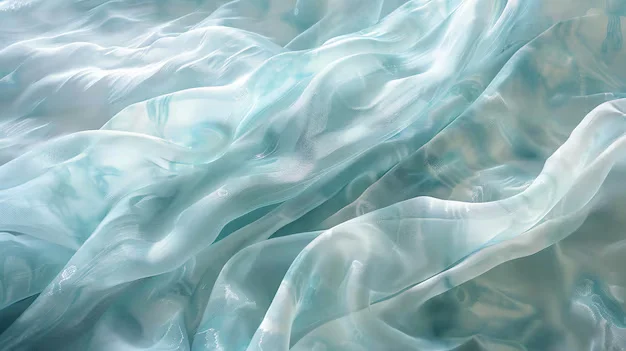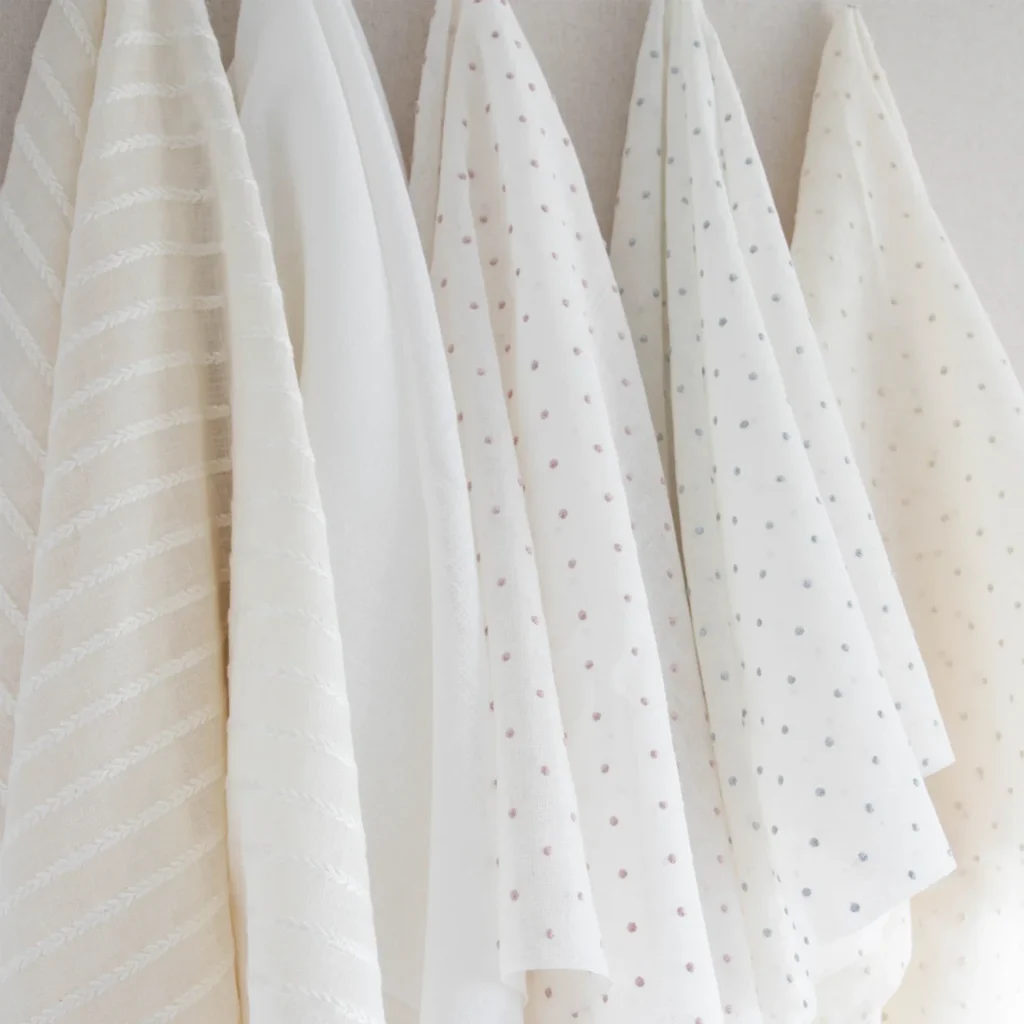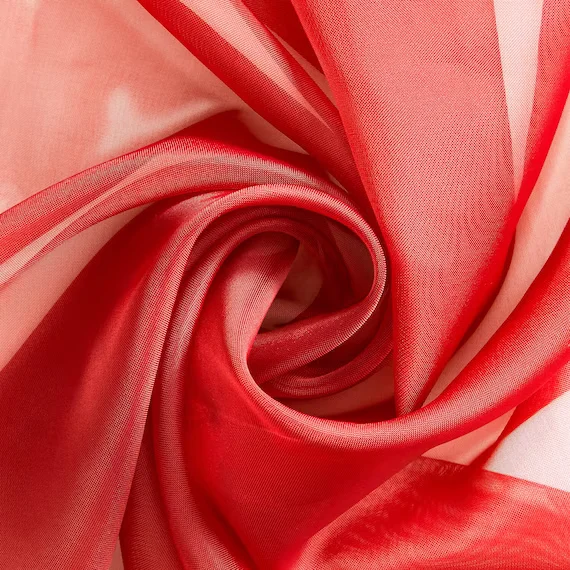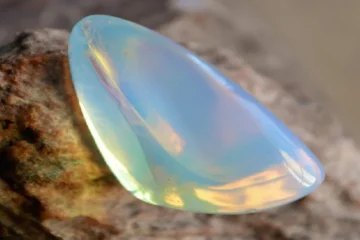Sheer fabric encompasses a variety of lightweight, translucent materials that exude an enchanting charm. Known for their breathability and delicate nature, these fabrics create an ethereal quality that enhances both garments and decor. From flowing dresses to elegantly draping curtains, sheer fabrics have become essential in the realms of fashion and interior design.
What is Sheer Fabric?
Sheer fabric, often referred to as see-through fabric, is a lightweight and semi-transparent material that allows light to filter through while offering a glimpse of what lies beneath. This type of fabric is celebrated for its delicate aesthetic and is commonly used to achieve a soft, airy look in clothing, draperies, and decorative items.
Types of Sheer Fabrics
The following are some varieties of sheer fabrics, each with special qualities and uses:
1. Chiffon
Chiffon is renowned for its ethereal elegance and lightweight, flowing drape. Made from silk, polyester, or nylon fibers, this fabric features a loose plain weave that contributes to its translucent allure. Available in a vibrant array of colors, chiffon is a popular choice for formal dresses, blouses, scarves, and curtains. Its delicate presence adds a touch of refinement and sophistication to any outfit or living space.
2. Organza
Organza stands out with its crisp texture and sheer quality, making it a symbol of refinement and elegance. Crafted from fine silk, polyester, or nylon, organza maintains a slightly stiff structure that allows it to hold its shape beautifully. This fabric is favored in haute couture and luxury fashion, often used for wedding dresses, evening gowns, and ethereal veils. Its ability to create volume and intricate designs makes organza a favorite among fashion designers, bringing a unique blend of structure and fluidity to garments.
3. Lace
Lace is another popular type of sheer that adds intricate beauty and texture to garments. Often used as an overlay or trim, lace can range from delicate and dainty patterns to bold and dramatic designs. Its transparency allows it to complement a variety of fabrics, making it a versatile choice for dresses, blouses, and accessories.
4. Tulle
Lightweight and net-like, tulle is frequently used in wedding and ceremonial dress. Tulle, which is renowned for being voluminous, is ideal for adding texture and layers to dresses and skirts. Its sheer nature adds a whimsical touch to any design, making it a staple in weddings and special occasions.
5. Georgette
Georgette has a distinct drape and is a little thicker sheer with a crinkled texture. Made from silk or polyester, georgette is known for its soft and flowing characteristics. It is often used in dresses and blouses, providing a subtle elegance while allowing for movement and comfort.
6. Mesh
Mesh is a versatile sheer often used in activewear and casual clothing. Its open weave allows for breathability and stretch, making it suitable for layering or as a decorative element in various designs. Mesh can be found in different weights and styles, catering to both fashion and functional needs.

Georgette: A Sheer Fabric of Ethereal Allure
Georgette is a captivating sheer fabric that enchants the world of textiles with its delicate charm. Known for its lightweight feel and subtly textured surface, georgette embodies sophistication in its purest form. Made from high-quality silk or polyester fibers, this sheer features a crepe-like appearance, adding an element of understated elegance to any outfit.
The true appeal of georgette lies in its graceful drape. It flows effortlessly with every movement, bestowing an air of fluidity and enchantment on the wearer. Among various types of sheer, georgette is a favored choice for creating captivating, flowy dresses that exude charm and grace. It is also ideal for exquisite blouses, offering a harmonious blend of comfort and style.
Georgette’s versatility shines through as it transcends occasions and dress codes. Whether for casual outings or formal events, this fabric adapts seamlessly to any setting, radiating timeless beauty. It is also popular for making scarves that add a touch of refinement to any look. Additionally, georgette plays a significant role in traditional Indian attire, particularly in sarees that showcase its sheer elegance.
Tulle: The Whimsical Sheer Fabric
Tulle is another ethereal sheer fabric that captivates with its delicate net-like structure. Renowned for its lightweight and airy quality, tulle is crafted from fine nylon or luxurious silk fibers. This fabric is often associated with iconic bridal veils and the enchanting allure of ballerina tutus.
The magic of tulle lies in its ability to create a whimsical effect. As an overlay fabric, it adds elegance and grace to skirts and dresses, transforming them into ethereal masterpieces. The soft folds and delicate layers of tulle give garments a dreamlike quality, making it a popular choice among designers. These enchanting qualities establish tulle as one of the most sought-after sheer fabrics.
Beyond fashion, tulle serves as a decorative element in various artistic endeavors. From floral arrangements to event decorations, this fabric infuses a sense of delicacy and romance, enhancing the ambiance with its sheer beauty. Tulle captivates the senses and evokes wonder, making it a beloved material in many creative fields.
In essence, tulle embodies whimsy and grace. Its airy nature and sheer qualities resonate with designers, artists, and dreamers alike. Whether adorning a bride on her special day or enhancing a grand ballet performance, tulle continues to weave its magic, transporting us to a realm of ethereal beauty.
Voile: The Ideal Sheer Fabric for Curtains
Voile is a delicate and airy sheer fabric that offers a gentle texture and translucent quality. Primarily made from cotton or cotton blends, voile is particularly well-suited for warm-weather garments as well as curtains and drapes. Its breathability and smooth sensation on the skin add to its charm.
Voile, which comes in a variety of designs, offers countless creative options for interior and fashion design. Its lightweight nature makes it an ideal choice for garments that require a soft, graceful drape. All things considered, voile distinguishes itself from other kinds of sheer fabric by skillfully fusing comfort and style.
Batiste: The Sheer Fabric for Elegant Attire
Batiste is a lightweight and translucent sheer fabric known for its delicate qualities. Woven with a simple pattern, it boasts a fine, smooth texture that enhances its softness and comfort. Typically made from cotton or cotton blends, batiste is popular for crafting blouses, lingerie, baby clothes, and lightweight curtains. Its breathable nature makes it ideal for warm-weather clothing, providing excellent ventilation.
The versatility of batiste lies in its gentle feel against the skin, making it a favored choice among those seeking elegance and comfort in their garments and home décor. Whether used in clothing or decor, batiste’s airy quality adds a touch of sophistication to any setting.

Lace: An Exquisite Sheer Fabric
Lace is a finely crafted sheer fabric that features intricate patterns, creating an exquisite and delicate appearance. It can be made from various materials, including cotton, silk, or synthetic fibers. Lace is often used as an overlay or decorative element in wedding gowns, evening dresses, lingerie, and home decor.
The sheer and ornate characteristics of lace lend a romantic and feminine touch to any outfit or living space. Its intricate details and ethereal quality make it a popular choice for those wishing to enhance their garments or interiors with elegance and beauty.
Mesh: The Unique Sheer Fabric
Mesh fabric stands out among sheer fabrics due to its distinctive open, net-like structure. Typically made from synthetic fibers like nylon or polyester, mesh is lightweight, breathable, and slightly elastic, allowing for comfortable movement. These properties make it widely used in sportswear and activewear, as it promotes optimal airflow during physical activities.
Additionally, mesh fabric is often incorporated as an accent material in fashion designs, adding visual interest and texture to garments. Its versatility and functionality have established mesh as a preferred choice in many applications within the fashion industry.
Gauze: The Airy Sheer Fabric
Gauze is another lightweight and translucent sheer fabric characterized by its open weave structure. Often made from cotton or cotton blends, gauze features a subtle crinkled texture and exceptional breathability. This fabric is ideal for various applications, including baby clothes and medical dressings, due to its ability to allow air circulation and absorb moisture.
In the fashion industry, gauze is preferred for creating airy summer clothing. Its ethereal appearance and soft touch make it perfect for curtains, diffusing light while maintaining a sense of privacy.
Silk Organza: The Sheer Fabric of Opulence
Silk organza is a luxurious sheer fabric made from the finest silk fibers. It has a crisp texture and a radiant sheen that adds sophistication to any outfit. Renowned for its elegance, silk organza is frequently used in formalwear, including bridal gowns and evening dresses.
This fabric is also ideal for creating voluminous and structured designs, serving as an overlay that enhances the overall aesthetic appeal of garments with its delicate translucency.
Uses of Sheer Fabric
Different types of sheer fabric have a variety of applications in daily life. Here are some common uses:
- Clothing: Sheer fabric is perfect for creating sophisticated and lightweight garments like blouses, skirts, and dresses. It can be layered over solid linings for a discreet look.
- Accessories: Sheer fabric is great for making stylish accessories such as scarves, shawls, and wraps, adding elegance to any outfit.
- Home Decor: Sheer fabric can be used for window treatments like curtains or drapes, allowing natural light to filter in while maintaining privacy. It also works well for decorative pillow covers and table runners.
- Crafts: Incorporate sheer fabric into craft projects like fabric flowers, dream catchers, or overlays for scrapbooking and card-making.
- Costumes and Cosplay: This fabric is ideal for creating enchanting costumes, including fairy wings, flowing capes, and embellishments for fantasy-inspired outfits.
When choosing sheer fabric, consider the desired opacity and its intended use. Exploring the inherent beauty of sheer fabric will inspire creativity and yield remarkable results in your projects. Embrace the versatility and elegance of sheer fabric to elevate your wardrobe and home décor.

Best Tips for Sewing with Different Types of Sheer Fabric
Sewing with sheer fabrics can be a delightful challenge. Take into account the following advice to assist you get the greatest results:
1. Choose the Right Needle
Choose a fine needle made especially for fragile textiles, like a microtex or sharp needle. This choice helps prevent snags and minimizes visible holes in the sheer fabric.
2. Use a Small Stitch Length
A shorter stitch length helps secure the fabric and prevents puckering or slipping during sewing. A stitch length of around 2mm is often recommended for working with sheer fabrics.
3. Test on Scrap Fabric
Before tackling your main project, test the stitching and tension on a scrap piece of the same sheer fabric. You can adjust your sewing machine’s settings to achieve the desired result with this practice.
4. Use Sharp Cutting Tools
For cutting sheer fabrics, use sharp scissors or a rotary cutter to achieve clean, precise edges. This helps prevent fraying and maintains the fabric’s delicate appearance.
5. Consider Using a Stabilizer
If the fabric is particularly lightweight or slippery, a stabilizer can provide additional support while sewing. Options include lightweight interfacing or tissue paper, which can be easily torn away after stitching.
6. Opt for Delicate Thread
Choose fine, lightweight thread that matches the color of your sheer fabric. Polyester or silk thread works well, providing strength without adding bulk to the seams.
7. Pin with Care
Instead of standard pins, use fine silk pins or sewing clips to secure the fabric. This approach prevents visible holes and snags in the sheer material.
8. Sew with a Light Touch
When guiding the sheer fabric through your sewing machine, apply gentle pressure. Allow the machine’s feed dogs to do the majority of the work to avoid stretching or distorting the fabric.
9. Finish Seams Neatly
Use techniques like French seams, narrow hems, or rolled hems to create clean, professional finishes on sheer fabrics. These methods minimize bulk and enhance the overall look of your project.
10. Practice Patience
Sewing with sheer fabric can be tricky, so take your time and work carefully. Patience and attention to detail will lead to better results.
Conclusion
In summary, sheer fabrics encompass a variety of lightweight and semi-transparent materials that bring elegance and ethereal beauty to numerous applications. From the delicate qualities of silk chiffon to the intricate designs of mesh lace, sheer fabrics offer incredible versatility for clothing, accessories, home décor, crafts, and costumes.
Whether you opt for flowing silk chiffon gowns, metallic mesh for glamorous accents, or nylon net for veils and tutus, the options with sheer fabric allow for creativity and the creation of stunning pieces that capture a sense of grace and transparency. With practice and these tips in mind, you’ll master sewing with sheer fabrics and create beautiful, professional-looking results.
FAQs About Sheer Fabric
1. What is sheer fabric?
Sheer fabric is a lightweight and semi-transparent material that allows light to pass through, giving it a delicate and ethereal quality. It’s commonly used in clothing, curtains, and decorative items.
2. What types of sheer fabric are available?
Common types of sheer fabric include chiffon, organza, georgette, tulle, voile, batiste, lace, mesh, gauze, and silk organza. Each type has its own unique texture and applications.
3. How do I sew with sheer fabric?
When sewing with sheer fabric, use a fine needle, a small stitch length, and sharp scissors. Test your settings on a scrap piece, and consider using a stabilizer if the fabric is lightweight or slippery.
4. Can sheer fabric be used for everyday clothing?
Yes, sheer fabric can be used for everyday clothing, such as blouses, skirts, and dresses. It adds elegance and can be layered for modesty or used as an overlay.
5. How do I care for sheer fabric?
Care instructions vary by fabric type, but generally, sheer fabrics should be hand washed or machine washed on a gentle cycle in cold water. Air drying is recommended to prevent damage.
For Getting More Information Thezvideo.




